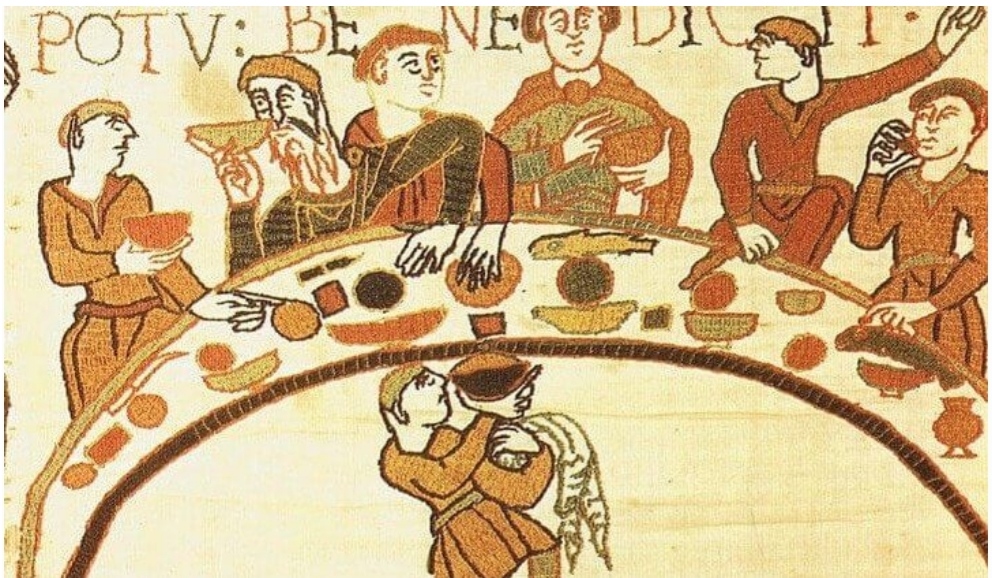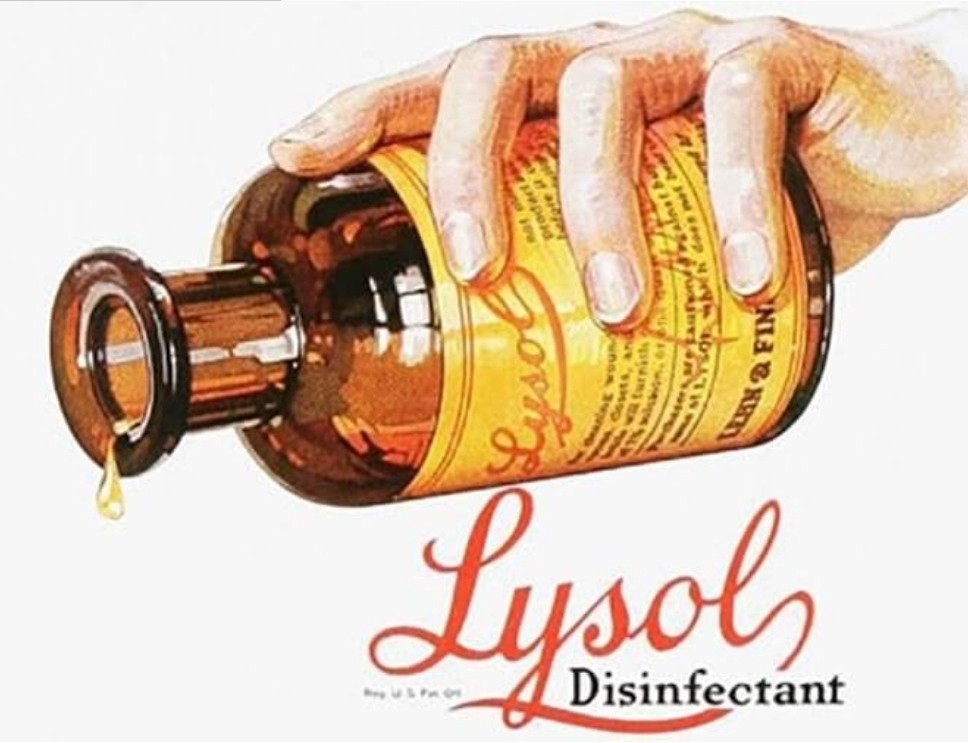Vintage Hygiene Practices of “Scientific” Western World !!!……Part-2
Flowers Were Carried Around to Cover up Bad Smells
Is it any surprise that people reeked during the Victorian era? Surely in every period ever, humans smelled, but with the lack of proper hygiene practices, cities smelled absolutely foul.
A way to combat this was by carrying around bouquets of fragrant flowers. That way, you could walk around and sniff the flowers all day whenever you caught a whiff of something smelling rancid. Which happened quite frequently, you can imagine.

Especially on a hot day, the city would be full of putrid smells that could be super overwhelming, so if you had something to smell like flowers or a scented handkerchief, you were lucky.
There Were No Utensils to Eat With
It is pretty known that people don’t eat with utensils, and in many parts of the world today, it is still a common practice. But this is particularly gross because people in the Middle Ages were not keen on washing their hands. Therefore when they ate without utensils, they were eating with their hands that were full of bacteria and germs. Sounds appetizing, doesn’t it? Yummy, E-coli and bread, anyone?

Just try not to think too much about unwashed dirt-covered hands reaching into communal plates of food. Medieval times were a dark place to be.
Sulfur Was Used to Remove Freckles
Today freckles are seen as charming and beautiful. But there was a time when people thought they were ugly and compared them to warts and blemishes. Therefore, it was common practice to try and rid your face of them by using sulfur. This isn’t the first time people put weird products on their faces in hopes of meeting some beauty standard. Thankfully, freckles aren’t a thing people want to remove nowadays.

Rubbing sulfur on your skin is an easy way to burn yourself so if people of those eras weren’t already suffering enough, add this weird practice to the list.
Water Pipes Were Made of Poisonous Lead
Lead poisoning was a common fate for ancient Romans. Their main water supply ran through pipes made of lead, so it’s no surprise that the constant exposure made them very sick. The consequences of this repeated exposure led to things like nausea, infertility, stomach pain, and even death. Despite the horrible effects, they continued to use lead because it was incredibly cheap and accessible—just another thing to add to the list of deadly ancient practices.

The convenience of running water probably outweighed any other factor during that time anyway. Again, another reason to be thankful for modern-day practices.
Burnt Herbs and Wine Were Used to Clean Teeth
Talking to someone from the Victorian era must’ve been difficult because of the smells. Brushing your teeth was not very common, and considering even when they did, they used urine, burnt herbs, and wine, it’s hard to imagine they smelled nice. Often they used a combination of burnt herbs like rosemary or even gargled wine as a mouthwash. There is no way they felt refreshed after that, so it’s quite puzzling.

It seems most of the hygiene practices people used in the past did more harm than good. Thankfully real toothpaste exists today.
Medieval Women Used Moss as Pads and Tampons
Life in the Middle Ages seemed uncomfortable and quite disgusting. Since pads and tampons weren’t invented yet, women had to improvise whenever they menstruated. Whenever women were menstruating, they wore something that resembled underwear and lined it with rags. If they were particularly poor, it was filled with moss to absorb the blood. Not a fun, sanitary, or comforting experience. The women that lived during that time must have been miserable.

Medieval women didn’t have the luxury of going to the drugstore and purchasing pads or tampons. Their methods of survival were necessary but, unfortunately, appalling.
There Was No Sterilization or Anesthesia for Surgeries
People of the 1800s had no concern or fear of germs and bacteria. When it came to performing any type of surgery, the doctors never sterilized the tools used. It wasn’t even a concept brought to people’s attention until the end of the century. This put people at high risk for infection because the same uncleaned instruments were used from person to person and could very well spread potential diseases.

If that wasn’t scary enough, there was also no decent anesthetic, so when you were cut open, you felt it. Truly something out of a horror movie.
Poisonous Plants Were Used for Makeup
Women are always sold different products to improve their looks. Beauty standards are constantly changing, yet they inevitably always target women, and the 16th and 17th centuries were no different. A trend of that time was to have big, dilated pupils and rosy cheeks purely for aesthetic purposes. Although the only way to achieve this was to eat a very poisonous plant named nightshade. The side effects were horrific, but again, beauty is pain.

Women would risk severe side effects from ingesting this plant, like heart failure, hallucinations, ulcers, and severe stomach pain. Was it worth it?
Men Applied Chicken Droppings to Their Heads to Cure Baldness
Male pattern baldness is experienced around the world and doesn’t discriminate. Yet it can cause many to experience much shame about their hair loss. In the 16th century, the search for a solution began, and the things people came up with were disturbing. For those who didn’t like wearing a wig, a topical solution that could be applied to the bald head was the next best bet. Can you guess what the mixture they concocted was?

A concoction of chicken droppings and potassium mixed together and applied like lotion to your head was said to stimulate hair growth though it was never successful.
Women Used a Disinfectant Solution as Birth Control
When women don’t have access to birth control, the solutions can become dangerous. Women were often used as test subjects to see if various substances worked or caused something else to happen. In this case, Lysol, the cleaning disinfectant solution, was advertised as the solution. Birth control in the United States wasn’t legal, yet advertisements for this product promoted its use as a savior for pregnancy and all other feminine hygiene issues.

As you could’ve guessed, the harsh disinfectant was not successful or safe to use in your nether regions. Just the thought of using it could send shivers down your spine.
Lead Makeup Was Commonly Used by Royalty
Queen Elizabeth I was known for sporting an unnatural appearance and often used lead-based makeup to appear extremely white. During this era, pale skin was sought after, and many copied her, trying hard to replicate her pale skin. The act of smearing lead on your face to achieve this was far too common and incredibly bad for your health. It is even believed that Queen Elizabeth ultimately died from lead poisoning.

Many thought the Queen caked her face in this lead-filed face powder to cover scars from smallpox and blemishes. Ultimately here’s another example of beauty being a pain, or in this case, just death.
Everyone Bathed Together
How would you feel if every time you bathed yourself, it was in a big pool with all of your friends? Sort of weird, right? Well, clearly, in the Middle Ages, there was nothing off the table. Bathhouses were a common way to clean yourself and socialize. Clearly, people who lived during that time had warped views of cleanliness. Sitting in a hot pool of filth doesn’t sound like a great idea.

Maybe it was fun to bathe with a group of friends but having a private bath is much preferred. There is no exaggeration when saying that hygiene back then was essentially nonexistent.
Rush Floors Were Full of Dropped Food and Animal Droppings
Rush floors were popular throughout the Middle Ages all the way up through the 16th century. It was a combination of herbs and grasses compacted down and splayed over the floors like a carpet. Its purpose was to provide insulation and fill homes with a sweet fragrance. Unfortunately, they were also a breeding ground for bacteria and bugs. More often than not, it was full of animal waste and food and drinks from spills.

The very top layer would be changed semi-regularly, but it was common just to throw fresh grass on top, resulting in the bottom layer being filthy. It could be decades before it was ever properly removed and replaced.
Wounds Were Cauterized With Pieces of Heated Metal
As we all know, losing too much blood can lead to death. So in the old days, people had to figure out ways to stop the bleeding from severe injuries before the victims would bleed out and die. The solution was to cauterize the wounds using a piece of metal held over a fire so it was boiling. However, the burns from doing this were so intense that if they didn’t die from losing blood, they would die from the pain of the cauterization.

Source : Compilation by Mika Ayla




